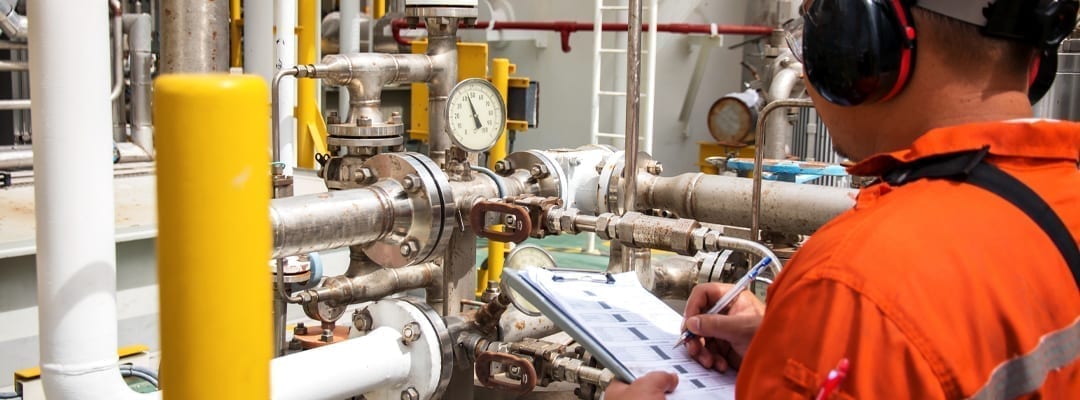
When you discover a potential hazard in your facility, the options for improving safety can seem endless. How do you know what to do first?
The five types of safety controls — also known as the hierarchy of hazard controls — help you answer that question. The hierarchy helps you systematically test solutions, from most to least effective.
According to the National Institute for Occupational Safety and Health (NIOSH), the five types of safety controls and their definitions are:
- Elimination: Physically remove the hazard
- Substitution: Replace the hazard
- Engineering controls: Isolate people from the hazard
- Administrative controls: Change the way people work
- Personal protective equipment (PPE): Protect the worker
This method recognizes that safety controls are not all created equal. As helpful as administrative controls can be, eliminating or substituting the hazard is always a better option.
What do these safety controls look like in practice? Let’s look at a few examples for common safety hazards.
Example: Fall Protection
Fall protection is the most frequently cited OSHA violation. The chances that you’ll need to look at different types of safety controls for this hazard are high.
Falls can occur on both elevated and flat surfaces. Before you work your way through the hierarchy of safety controls, try to identify the root cause of the falling hazard.
- Elimination: Remove or fix a leaking faucet that’s creating a slipping hazard.
- Substitution: Replace narrow stairs with standard stairs that have sufficient space for the door to swing, or with scaffolding.
- Engineering controls: Install guard rails and safety nets to prevent accidental falls.
- Administrative controls: Train workers how to use ladders and manlifts safely.
- Personal protective equipment: Provide safety harnesses and hard hats for crews working at heights.
Make sure you also follow OSHA regulations for fall protection. Rules and recommendations vary based on your industry.
Example: Hearing Conservation
With the right safety controls, noise-induced hearing loss is preventable. In fact, implementing safety controls is the third step of a hearing conservation program.
Examples of safety controls for hearing protection include:
- Elimination: Isolate the noisiest equipment in areas where employees are rarely present.
- Substitution: Replace a loud, old motor with a quieter motor in better condition.
- Engineering controls: Lubricate machines regularly to decrease the amount of noise.
- Administrative controls: Schedule shifts so that employees get a break from the noise for 15 minutes every hour.
- Personal protective equipment: Provide earplugs or earmuffs with the correct noise reduction rating and train employees how to wear hearing protection.
To find out if you need these safety controls, you must first measure employee noise exposure and conduct audiometric tests. Learn more about how to set up a hearing conservation program.
Example: Respiratory Protection
Failure to follow respiratory protection standards causes hundreds of deaths and thousands of illnesses each year, according to OSHA.
Respirators are a key part of these standards. But if you can use other safety controls, too, you’ll be better protected.
- Elimination: Remove asbestos ceiling tiles from old buildings.
- Substitution: Choose chemicals and materials that are less harmful.
- Engineering controls: Install a ventilation system in your facility.
- Administrative controls: Reduce the number of people present when a process will produce dust or a vapor.
- Personal protective equipment: Have workers wear respirators to purify the air they breathe and filter out contaminants.
Read OSHA’s Respiratory Protection Standard for detailed guidelines for your industry.
Example: Eye Protection
Eye protection is another area where you can apply the hierarchy of hazard controls.
According to the Center for Disease Control and Protection (CDC), most eye injuries are caused by small particles striking or scraping the eye, such as dust and metal slivers. Other common causes of injury include objects penetrating the eyeball, burns from industrial chemicals and thermal burns from welding.
To prevent these types of injuries, you could implement safety controls such as these:
- Elimination: Get rid of an old machine that’s ejecting hazardous particles.
- Substitution: Use cleaning chemicals that are less harmful to the eye.
- Engineering controls: Install plexiglass in front of areas where flying objects could strike someone’s eye.
- Administrative controls: Train welders how to protect themselves from radiant energy.
- Personal protective equipment: Provide safety glasses, goggles or face shields to protect workers’ faces.
Read OSHA’s eye protection standards for more information.
Choose the Right Types of Safety Controls
Addressing hazards haphazardly isn’t effective. The hierarchy of hazard controls helps you choose the right action steps so you can provide a safe work environment.
These examples are just the starting point. Once you understand the model, you can apply it to all kinds of safety situations.
Read more